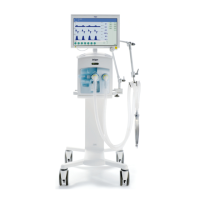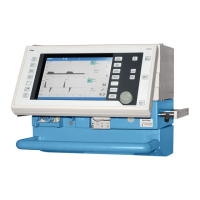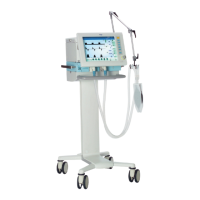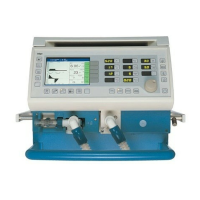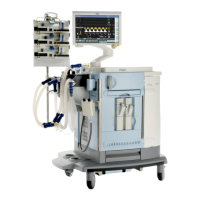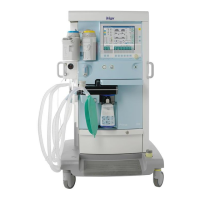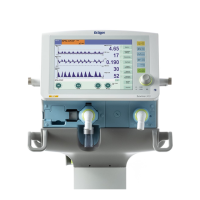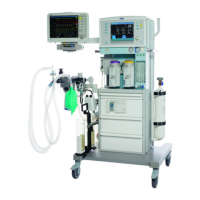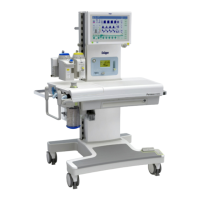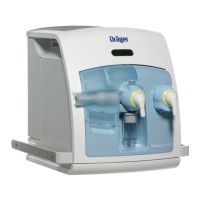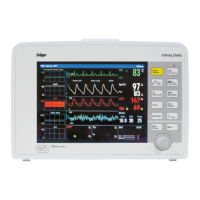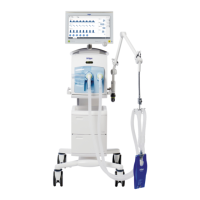
Do you have a question about the Dräger Evita V800 and is the answer not in the manual?
| Device Type | Ventilator |
|---|---|
| Target patient population | Adult, pediatric, and neonatal patients |
| Respiratory rate | 2 to 100 bpm |
| PEEP | 0-40 cmH2O |
| FiO2 Range | 21-100% |
| Display | Touchscreen |
| Power Supply | 100-240 VAC, 50/60 Hz |
| Connectivity | Ethernet, USB |
| Ventilation Modes | Volume-controlled, pressure-controlled |
| Weight | 48 kg (without trolley) |
Overview of the main components of the Evita intensive care ventilator.
Identifies front-facing elements of the display unit, including touch screen and controls.
Details the rear ports and features of the display unit, such as USB and LAN connections.
Highlights the front components of the ventilation unit, including valves and sensors.
Explains the basic layout of the ventilator's screen interface, including key areas.
Details the primary operational screen, identifying patient, therapy, and status indicators.
Describes the meaning of different colors used on the screen for alarm prioritization.
Explains the interaction method using touch and the rotary knob for setting parameters.
Provides step-by-step instructions for powering on the Evita ventilator and initiating startup.
Guides through performing the essential system and breathing circuit pre-operational tests.
Details the procedure for testing the breathing circuit, including selecting components.
Outlines the process for initiating therapy based on patient height for new patients.
Describes how to start therapy by selecting the patient category and therapy type.
Explains the rapid initiation of therapy in emergency situations without full pre-checks.
Instructs on how to select and change the active ventilation mode on the device.
Details the procedure for adjusting and confirming ventilation parameters using the rotary knob.
Explains how to access and configure advanced settings for the selected ventilation mode.
Guides on modifying the therapy type while the device is in operation.
Describes the specific modes and considerations for non-invasive ventilation (NIV).
Covers the use of oxygen therapy with accessories like masks or cannulas.
Provides steps to safely stop ongoing ventilation therapy and return to standby.
Explains how optical signals on the alarm bar indicate different alarm states.
Details the different acoustic alarm sounds and how to suppress them temporarily.
Describes how to view and acknowledge active and past alarm messages via the logbook.
Guides on configuring upper and lower alarm limit values for various parameters.
Step-by-step guide for connecting the CO₂ sensor and cuvette to the ventilator.
Explains how to open the CO₂ monitoring dialog and activate monitoring features.

